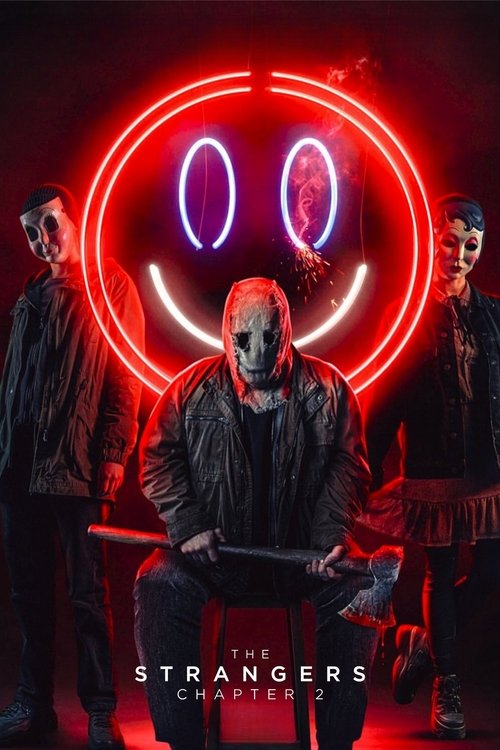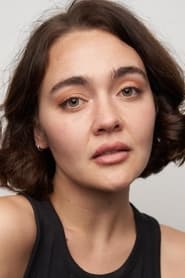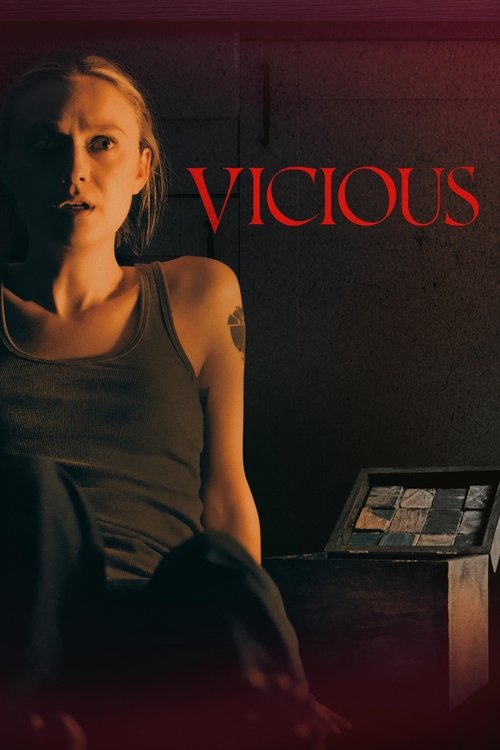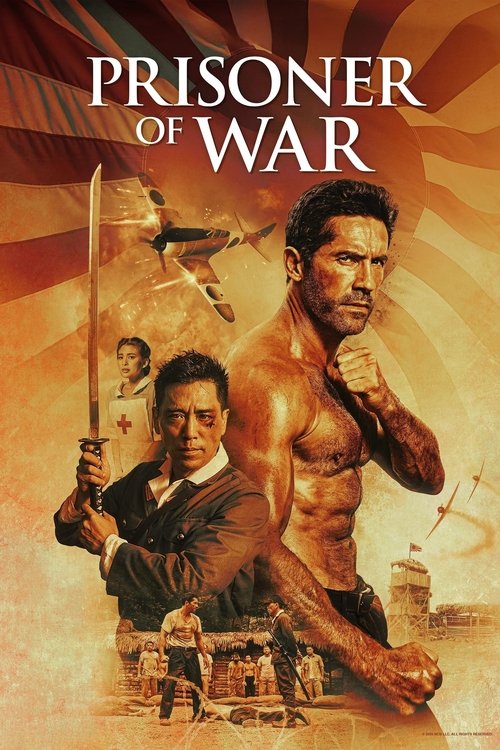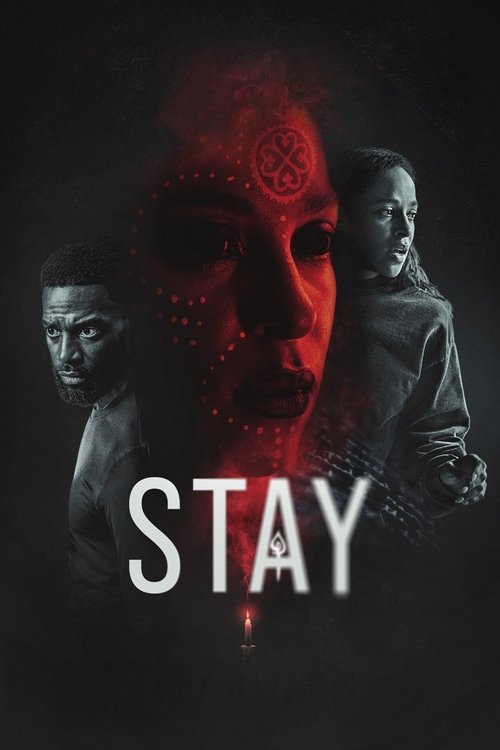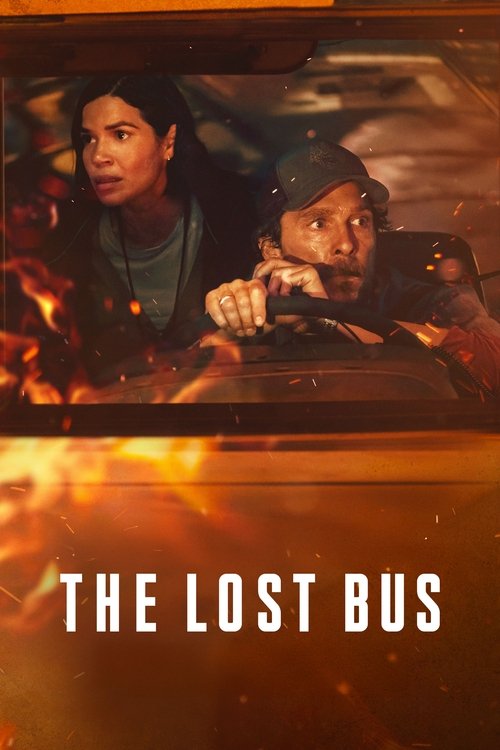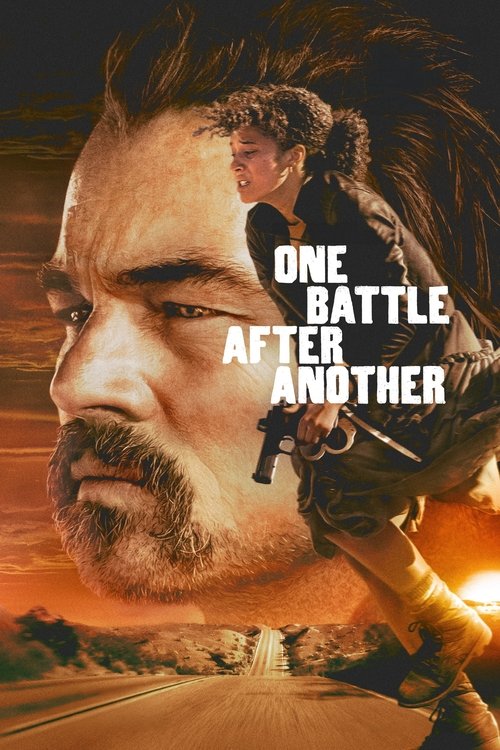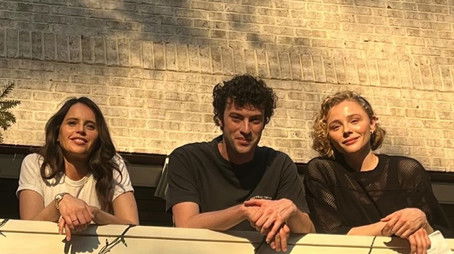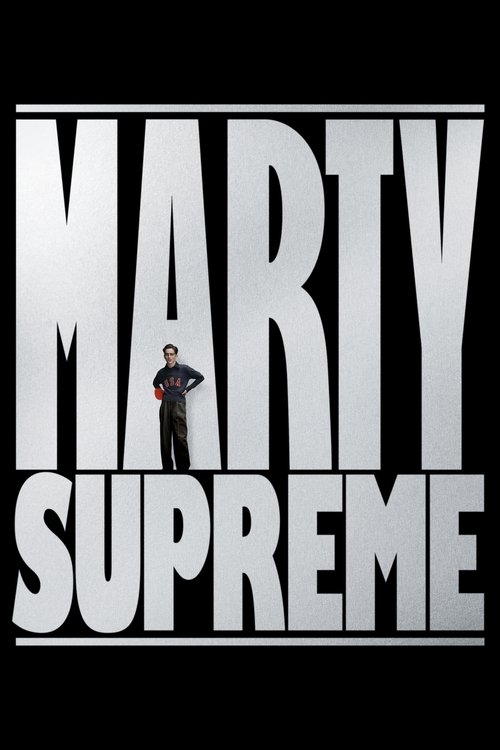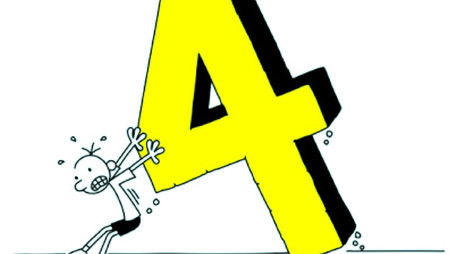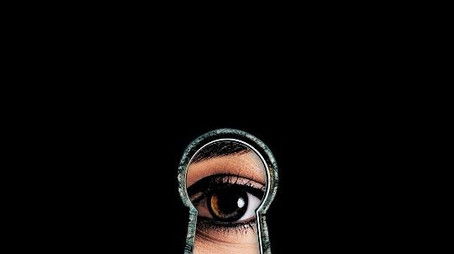
Ask Your Own Question
What is the plot?
A pair of teenage boys drive a dark county road at dusk when an old, rusted sedan pulls alongside and forces them to stop. Three masked figures step out and surround the car; one of them, a young woman wearing a child-sized porcelain mask, steps forward and asks for a Christian Living pamphlet. She tells the boys, in a soft, matter-of-fact voice, that she is a sinner "sometimes." The three climb back into their sedan and drive away down the highway, leaving the boys shaken. Minutes later, while searching by flashlight, the boys discover a secluded house set back from the road. Inside, a man named James lies slumped on the wooden floor with vacant, open eyes; Kristy is seated, bound and unconscious in a chair. One boy calls to Kristy; she wakes and screams as the frame cuts to black.
A montage of highway miles follows and then the film moves forward in time to a young woman and her long-time boyfriend traveling west. She is played by Madelaine Petsch; he is played by Froy Gutierrez. They argue quietly about where to settle and turn off the interstate toward the coastal forests of Oregon, intent on starting a new life in the Pacific Northwest. Their car begins to cough and then dies on a narrow two-lane road outside a small town called Venus, Oregon. The couple push the vehicle onto the shoulder; the boyfriend goes to a service station but finds it closed. They use a phone and discover a single Airbnb listing on a map, a rental described as a cabin on a private lane. With no cellular signal and night approaching, they walk along a gravel drive and reach a lonely, ranch-style house sitting in a mire of grass and pines. The house is sparsely furnished, with a radio on a shelf, a record player, and a placard that reads that the owners are out of town. They settle in, start a heater, and the boyfriend goes out to check the car one last time.
They spend the evening trying to be normal: they make coffee, set out a blanket by a fireplace, and talk about where they will live. The atmosphere grows tense when the radio emits a warped, looped needle-scratch of a record; the sound settles into a background hum that the woman recognizes from an old song. The front doorbell rings once, then again. The boyfriend opens the deadbolt and peers outside; nobody stands on the porch. They hear pebbles hit a window. He steps out, shining his flashlight across the yard, and spots a figure retreating into the darkness. He calls to it and receives no answer.
The first direct encounter occurs when three strangers--two adults and a younger female--appear at the driveway and begin to pelt the house with stones and push at the doors. They wear featureless masks: one mask resembles a pale, expressionless doll; another is an old ballroom mask with darkened eyeholes; the third is a crude, cracked porcelain face. The strangers do not speak beyond occasional murmurs; instead they chant a single line in low voices, "You were home." They ring the bell and knock in a slow, mechanical rhythm. The couple lock the doors and speak in urgent whispers about calling the police. Their phones show no signal. The boyfriend retrieves a crowbar and the couple bolt the door; the young woman hides behind the sofa as the knocking escalates into pounding.
Through the night the intruders escalate their tactics. One of them jams a window with a tire iron and forces a pane loose. They break in by prying open a back door, slipping across the threshold while the woman watches from a narrow crack. When the boyfriend catches sight of a masked figure in the kitchen, the strangers retreat and then batter the front door in a coordinated effort to isolate and terrify. They blackout the house by yanking at the circuit box. The couple move from room to room during the power outage, trying to outmaneuver three people who seem to anticipate every attempt to communicate with the outside world. The boyfriend leaves a note on the bumper of the car hoping a passing motorist will see it; he goes outside only to have a stranger stand a few lengths away, unmoving, staring with blank eyes behind the mask. The boyfriend tries to charge him and is met with brutal force: the masked man grabs a kitchen knife and swings, slashing the boyfriend across the forearm and shoulder. Blood brightens the dark.
A first serious battle takes place in the living room after the boyfriend returns with a shot to the leg. The trio uses a tactic of coordinated intimidation: one walks slowly in broad daylight manner, another hurls threats without speaking, and the daughter smiles and presses her forehead to the glass. The boyfriend manages to drive one of them back with a flare gun he finds in a kitchen drawer and fires into the air to attract attention. Instead of running, the strangers gather at the edges of the property, calling to each other in the same clipped rhythm. They break back into the house from the rear and the woman sees them drag her boyfriend into the hallway. She lunges to help and grabs a butcher's knife from the counter, trying to free him. The daughter of the trio grabs the woman by the collar, shoving her; the boyfriend swings at the assailant and is shoved down onto the hardwood. One of the adults forces a length of rope around his chest and binds him to a chair. They do not kill him swiftly. They strip his jacket and begin to cut, stabbing him slowly and repeatedly with a small, serrated blade, over and over; the film documents the precise cruelty: a series of shallow, then deep stabs through the ribs and abdomen. Blood soaks the chair. The boyfriend pleads. The masked man leans close after each stab and repeats, "You were home." Eventually he pierces the throat with a single, finishing slash. The couple's life partner dies tied to a chair, bleeding into the floorboards.
The woman fights back. As the intruders leave the room, one of them pins her to the kitchen counter and gags her with a handkerchief. She bites and kicks. With a sudden surge she frees her hands and grabs for a cast-iron skillet. She swings it into the face of the daughter-masked attacker; the strike knocks the mask askew, revealing a portion of hair and a bloody cheek. The woman runs beyond the yard gate and into the dark woods, dragging a bloodstained towel. She thinks that if she can make it to the main road she will find help, but the three strangers have cut the tires of the cars and strewed debris to slow any escape. They throw her into a ditch and hold her there. When she feigns fainting, they leave her for a long time, walking back up the driveway as if to savor the moment.
During the long hours of the night, the woman wakes and listens to the strangers moving through the house, whispering to one another about "rituals" and "the plan." She overhears fragments of conversation through a thin wall--one of the adults talks about "training" and the girl mentions "sometimes I like to ask people if they're sinners." The trio returns to their vehicle and drives away in silence; they leave the woman bound on the ground. She manages to free herself with a shard of glass and staggers back to the house. Inside, she finds personal items suggesting a pattern. On a shelf under the stereo she finds a box of Polaroids: images of other houses, other interior shots with masked figures posed next to sleeping people, some photographs of corpses, and a folded pamphlet of Christian Living tossed aside. There are maps with notes pinned to them; towns circled. In the attic she discovers a stack of old videotapes and a battered camcorder. She takes a cassette and runs it in the player, watching home-video-quality footage of three people--the same masked trio--performing a routine: scouting a house, looking at a family photo through a window, then returning to their car and writing the house's address in a ledger. The footage ends with the trio standing in a breakroom laughing and the daughter looking into the lens, saying, "We make them stay."
The woman decides she will not let them take her life in silence. She rigs a trap in the kitchen, stringing up a stove rack and placing heavy pots on the counter. When the strangers return later that night to retrieve items and to check their work, she ambushes them. She flings a pot lid and slams a frying pan into the face of the female intruder, knocking her to the floor and causing the porcelain mask to crack. The masked adults pull guns in response, and one of them fires a warning shot into the ceiling, scattering plaster. The woman charges at the unmasked daughter, who stands up and moves toward her with the same flat, rehearsed calm. They struggle; the daughter digs at the woman's eyes, but the woman twists and plunges the butt of a broken lamp into the attacker's sternum. The daughter collapses and the lamp crushes the porcelain mask; blood pours from her mouth as she gasps and dies on the linoleum.
After killing the younger attacker, the woman faces the two remaining adults. One of them retreats to the yard and pulls a car battery out of his trunk to connect to a pair of jumper cables. He intends to electrocute the woman as she hides in the bathtub, but she flips the switch on a water heater and floods the basement. The adult male steps into the cellar to check the breaker and slips on wet concrete; he hits his head on a low beam and falls, knocking himself unconscious. The woman grabs the metal poker from the fireplace and walks down into the cellar, finds the man stunned and briefly in shock, and then presses the poker into his throat repeatedly; she stabs until his chest caves and stops. The film records the exact sequence: the strike to the head, the stumble, the fall against the support beam, the silence, and then the deliberate, mechanical plunges of the poker until his chest heaves no more. She drags the heavy body up the stairs and locks it in the carport.
Only one stranger remains: a masked woman who had been the trio's leader. She emerges from the dark with a hand-stitched mask and a small revolver, sweeping the house with a cold, measured stare. She had been the one who asked for the pamphlet in the opening scene. She tells the survivor, in an even voice, that they have always done this and that the world is a place that will never belong to those who stay inside. The survivor pushes past the leader and slams a door, forcing the two into a narrow corridor where they wrestle for the gun. The masked woman fires once; the bullet shatters a window and embeds in the wall, missing both women. The survivor manages to wrench the weapon away and fires a shot into the leader's shoulder, then another into her thigh. The leader does not cry out but continues to smile through a mouthful of blood. The survivor raises the pistol again and shoots the leader in the temple. She watches the mask slough to one side and a face slacken. The leader dies, slumping across a kitchen table covered in scattered pamphlets.
After the final kills, the survivor collapses next to the corpses and sobs. Dawn light leaks through the curtains. She dials emergency services with trembling hands. Police arrive hours later with headlights and radios; they move through the property, taking photographs and taking statements. The woman gives her name, describes her boyfriend, and points to where his chair sits, still spattered with blood. Officers call for ambulances and forensic teams. An investigator opens the trunk of the stranger's car in the drive and discovers a ledger with names and addresses--some crossed out, others circled--and the holiday photos with dates and times. The police find multiple other sites connected by the trio's travels; they bring up files on unsolved home invasions dating back years. Through fingerprints and the Polaroids the officers link the dead trio to numerous disappearances.
On the roadside outside Venus, a coroner places evidence markers and loads a stretcher into an ambulance. The woman watches as men in plastic suits move bodies into sealed bags. She reaches to touch the boyfriend's face one last time before they pull him away; his mouth hangs open in a frozen plea. An officer guides her to a squad car to get her statement. She stands on the porch and looks back at the house one final time. On a table near the back door, someone has arranged the victims' masks in a crude tableau. The camera closes on the masks' dead, unseeing faces.
After the police drive the woman away, detectives continue to comb the property. They find a sequence of old letters under the floorboards revealing that the leader of the trio had been abused in childhood and had later formed a bleak family unit of their own. The letters read like the leader's attempts to rationalize the attacks, and they end with a single line referring to "teaching them not to take home for granted." The detectives file the evidence and prepare to disseminate it to the public. News vans arrive and the town of Venus is temporarily drenched in headlines.
In the final scenes, the woman returns to the site three months later at night, pulled by a restless compulsion. The house is set to be razed but stands abandoned; caution tape flutters in the wind. She slips past a construction barrier and walks into the living room, where the blood stains have been scrubbed but the scorch marks remain. She opens a drawer and finds a small, familiar mirror. For a long minute she holds it up and stares at her reflection, at the faces she has carried and the faces she has taken away. The film records her breathing and the creak of floorboards. Then she walks outside to the long gravel drive. As she approaches the roadway, a car slows at the bend and a young female passenger looks straight at her from behind the windshield. The woman notices, but the car drives on past. She stands alone under the beams of a streetlight and then turns to walk away into the dark forest, carrying the memory of the night in precise, indelible pieces: the sound of the record scratch, the ring of a bell, a butcher's knife, a crowbar, a mask cracked on the tile. The final shot fixes on the house as a silhouette against a paling sky; the camera pulls back until the structures and the trees shrink into a thin line, and then the screen goes black.
What is the ending?
At the end of The Strangers: Chapter 2 (2025), Maya, the sole survivor from the first film, faces the relentless masked killers once again. After a brutal night of terror at a remote Airbnb, Maya manages to survive the ordeal, continuing her fight against the Strangers who are determined to finish what they started.
Expanding on the ending scene by scene:
The climax unfolds in the isolated Airbnb where Maya and her companion have taken refuge after their vehicle breaks down. As night deepens, the three masked Strangers--silent, brutal, and methodical--descend upon the house, terrorizing Maya and anyone with her. The tension escalates with each encounter, showcasing Maya's resilience and determination to survive despite overwhelming odds.
Throughout the night, Maya is forced into a series of harrowing confrontations with the Strangers. She uses her wits and whatever means she can find to evade and fight back against the attackers. The Strangers are depicted as relentless and merciless, embodying a senseless, unceasing purpose to kill.
In the final moments, Maya confronts the Strangers directly. Despite injuries and exhaustion, she refuses to succumb. The film ends with Maya still alive, having outlasted the night and the killers' assault. Her survival is consistent with her role as the trilogy's final girl and protagonist, setting the stage for the next chapter in the series.
The fate of the other main characters involved in the ending is grim: Maya's companion and any other victims encountered during the night do not survive the Strangers' attack. The Strangers themselves remain a looming threat, their identities and motives still shrouded in mystery, though Chapter 2 begins to explore their backstory more than the first film.
Maya's survival underscores her role as the trilogy's heroine, carrying the narrative forward and maintaining continuity between the films. The ending leaves her fate open but hopeful, emphasizing her strength and will to survive against the senseless violence of the Strangers.
Who dies?
In "The Strangers: Chapter 2," several characters meet their demise under gruesome circumstances. Here's a detailed account of the deaths in chronological order:
-
Billy Bufford: Billy is a state police officer who encounters Maya after she escapes from her previous ordeal. He attempts to help her but is killed by Pin-Up Girl. This event sets the tone for Maya's continued struggle to survive.
-
The Household Occupants: Maya takes refuge in a house belonging to Nurse Danica, Chris, Gregory, and Wayne. However, Pin-Up Girl and Dollface invade the house, slaughtering everyone except Maya. The brutality of this scene highlights the relentless nature of the masked killers.
-
The EMT Driver: A private EMT is called to transport Maya to Portland, but before he can do so, he is also killed by the masked intruders. This further isolates Maya and increases her desperation.
-
Pin-Up Girl: Maya manages to escape into the EMT but is ambushed by Pin-Up Girl, who was hiding inside. Initially, Maya stabs Pin-Up Girl in the neck with scissors, believing her to be dead. However, Pin-Up Girl resurfaces and attempts to strangle Maya. In a desperate bid to escape, Maya intentionally crashes the EMT, causing Pin-Up Girl to fly out of the windshield and meet her death. This scene is pivotal as it marks the first time Maya successfully kills one of her tormentors.
These deaths are central to the plot, showcasing the relentless pursuit of Maya by the masked strangers and her fight for survival against overwhelming odds. The film's narrative is driven by these intense and violent encounters, which test Maya's resolve and will to live.
Is there a post-credit scene?
Yes, The Strangers: Chapter 2 (2025) follows a post-credits scene from The Strangers: Chapter 1 that sets up the sequel. In that scene, Maya wakes up in a hospital after being stabbed, only to find Scarecrow--the masked killer--lying in bed beside her, haunting her recovery. This chilling moment confirms Maya's survival but hints at a disturbing continuation of her ordeal, which leads directly into the events of Chapter 2.
The Strangers: Chapter 2 itself, releasing on September 26, 2025, continues the story with Maya returning, and the post-credits scene from the first film is the key narrative bridge to this sequel. There is no specific information indicating a new post-credits scene at the end of Chapter 2 itself, so the known post-credits scene is from Chapter 1, serving as a teaser for the sequel.
What is the significance of Maya's trauma in The Strangers: Chapter 2 and how does it affect her actions?
Maya, played by Madelaine Petsch, is the sole survivor from the first film and is haunted by trauma from those events. Her psychological state deeply influences her behavior and decisions throughout Chapter 2, as she encounters new people whose intentions are unclear, making her journey more complex and tense.
Who are the three masked strangers in The Strangers: Chapter 2 and what is their connection to the previous film?
The three masked strangers are the antagonists who terrorize the characters from nightfall until dawn. While their identities and motives are part of the film's mystery, the sequel ties their actions and timeline into the first movie, expanding on their roles and setting up the trilogy's final installment.
What role does Gregory, played by Gabriel Basso, have in the story and how does his character impact the plot?
Gregory is a quiet stranger whose true nature is ambiguous. His interactions with Maya and other characters add layers of suspense and uncertainty, as viewers question whether he is friend or foe, which drives much of the film's tension.
How does the character of Sheriff Rotter, portrayed by Richard Brake, influence the atmosphere and events in the film?
Sheriff Rotter is a disturbing figure in the small town setting of the film. His presence adds a menacing and unsettling tone, contributing to the film's horror elements and complicating the protagonists' attempts to find safety.
What is the fate of Ryan, Maya's boyfriend from the first film, in The Strangers: Chapter 2?
Ryan, played by Froy Gutierrez, is Maya's boyfriend from the first film. In Chapter 2, his status is ambiguous--he may be dead or still alive--which adds emotional complexity and suspense to Maya's storyline and the overall plot.
Is this family friendly?
The movie "The Strangers: Chapter 2" (2025) is rated R by the Motion Picture Association, indicating it is not family friendly. It contains bloody violence and strong language, which are potentially objectionable or upsetting for children and sensitive viewers.
Specifically, the film involves a couple being terrorized by three masked strangers in a remote setting, with intense scenes of slasher horror and relentless brutality. The violent content includes graphic physical attacks and bloodshed, creating a tense and frightening atmosphere. The language used is also strong and explicit.
Because of these elements, the movie is unsuitable for children and may be disturbing for sensitive people due to:
- Graphic and bloody violence
- Intense scenes of terror and threat
- Strong, explicit language
- A dark, suspenseful, and frightening tone throughout
No detailed plot spoilers are revealed here, but the overall content is clearly intended for mature audiences only.

